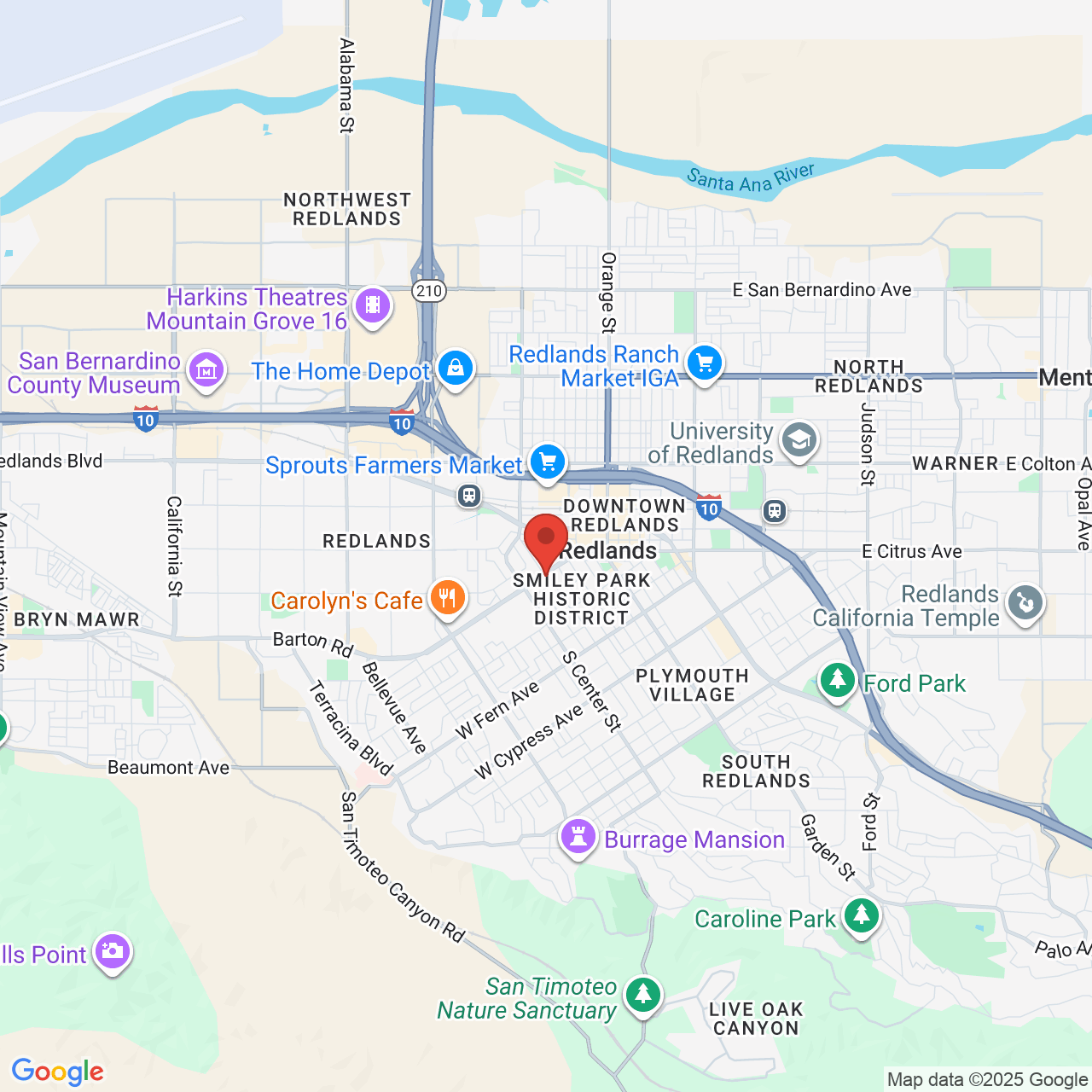Cosmetic Dentistry Redlands, CA
High-Tech Care for Fast, Flawless Smiles
- Same-day crowns and custom veneers
- Advanced laser treatments for precise results
- Judgment-free, compassionate approach
- Trusted by dentists and local families alike
“The best dentist ever.” High Praise for Dr. Hoffer and His Team
“Dr. Hoffer is very knowledgeable and caring. I can tell you from my personal experience he is the best dentist ever. He is thorough, kind, answers all my questions, and addresses all my concerns. His dental staffs are friendly and highly commit to patient care.
They are honest in their opinions about what they recommend but never pressure you to get extra stuff done.”— Phong, 5-Star Review
Meet Dr. Frederick Hoffer
Patients across Redlands, Highland, and Loma Linda choose Dr. Frederick Hoffer for his rare combination of skill, warmth, and forward-thinking care. Known as “Tres” to many, he leads with integrity and brings decades of cosmetic dentistry experience to each appointment.
- Graduate of Loma Linda School of Dentistry (1996)
- Known for same-day smile transformations using CEREC
- Trusted by fellow dentists for optimal care and outcomes
- Invests in cutting-edge tech for maximum comfort and efficiency
- Builds lasting patient relationships rooted in compassion
Dr. Hoffer believes that cosmetic dentistry is more than aesthetics. It’s a chance to boost self-esteem and improve overall wellness. Whether you’re looking for a subtle adjustment or a comprehensive smile makeover, he has the expertise and artistic skill you need to look and feel your best.

Making Cosmetic Dentistry Accessible for Patients in Redlands, Highland, and Loma Linda
At Redlands Family Dentistry, we work hard to make a beautiful smile achievable. Our team will walk you through payment options and ensure there are no surprises.
- Accepts most PPO and Indemnity dental insurance
- Flexible financing available through CareCredit®
- Transparent pricing with no hidden fees
- Multiple payment types accepted, including cards and cash
We’ll listen closely to your goals, consider your timeline, and design a treatment plan that aligns with your goals. From the first consultation to the final result, we aim to remove stress and support your journey toward a smile you’ll love.
Our Cosmetic Dentistry Treatments
Dr. Hoffer provides everything you need in one location. If you're in good oral health and dreaming of a cosmetic upgrade, you may be a candidate for one or more of these treatments at our Redlands dentist's office:
Teeth Whitening
Dental stains can make an otherwise amazing smile look dull and unhealthy. Fortunately, our teeth whitening treatments can give your smile brilliance and a stunning new appearance in a single visit! Opalescence™ Boost™ can be fine-tuned to maintain your comfort even if you have very sensitive teeth. Whitening is an amazing way to rejuvenate your smile in plenty of time for an upcoming event where you want to look your absolute best.
Porcelain Veneers
Not all dental imperfections require restorative treatment, but sometimes even the most minor flaw—such as a small chip, slightly crooked positioning, or a wide gap—can make you hesitate to smile. Fortunately, veneers are a cosmetic dentistry solution that can correct these issues in just a couple of office visits. These thin restorations fit over the front surface of a tooth to give your smile instant symmetry and a charismatic look. Best of all, Dr. Hoffer customizes each veneer to look just like a natural tooth, so others will admire your smile, not your dental work.
Dental Bonding
Not sure if you want to invest in porcelain veneers? Need a little upgrade in a short amount of time? Bonding is similar to veneers in that it conceals small imperfections in your smile. However, instead of a porcelain restoration, it involves our dentist applying tooth-colored resin to your tooth. Bonding can be completed in as little as one appointment, and the results are incredibly realistic. While bonding doesn't last as long as veneers, it can help you decide if you'd eventually like to enhance your smile with a more permanent cosmetic dentistry option.
Laser Gum Contouring
In some cases, excess gum tissue can cause otherwise beautiful teeth to look short or underdeveloped. Our dentist uses laser dentistry to comfortably remove excess gum tissue and create a beautiful frame for your teeth. Sophisticated laser technology means there is no need for scalpels or sutures. You'll heal faster, and there is minimal risk of infection or other complications.
Smile Makeover
A smile makeover combines multiple cosmetic dentistry procedures to give your smile a dazzling enhancement. It begins with a dental examination and a personal consultation with Dr. Hoffer. Once you explain your goals and Dr. Hoffer assesses the health of your smile, he can recommend the right combination of dental procedures to realize the smile you have been imagining.
“So kind and professional.”
Dr Hoffer and his staff were so kind and professional. He did an excellent job. I was actually falling asleep while getting fillings! He has all high tech equipment and a beautiful office environment. I'll be referring everyone I know!
View on GoogleDr Hoffer is the best dentist that I have ever used. I had some work done today and it was quick & painless (as usual). I highly recommend him.
View on Google






